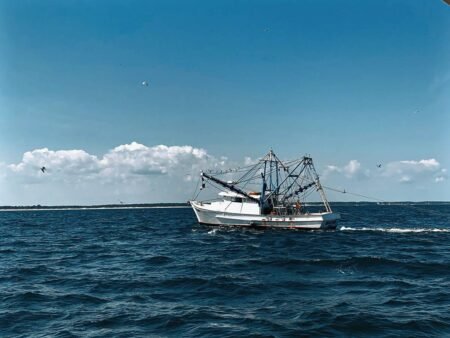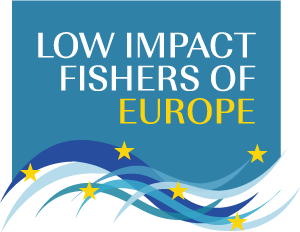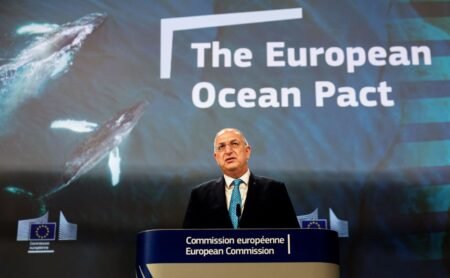This communication from the European Commission establishes an action plan for the conservation and sustainable exploitation of fisheries resources in the Mediterranean.
Advertisement
ACT
Communication from the Commission to the Council and the European Parliament of 9 October 2002 laying down a Community Action Plan for the conservation and sustainable exploitation of fisheries resources in the Mediterranean Sea under the Common Fisheries Policy [COM 2002- 535 final – Not published in the Official Journal]
SUMMARY
Eight objectives for the Community fisheries policy in the Mediterranean.
- The European Union (EU) will play a leading role in the Mediterranean to ensure the sustainable exploitation and management of resources. It will act within the General Fisheries Commission for the Mediterranean (GFCM) in cooperation with non-EU countries, or on its own if necessary.
- To improve fisheries management, decisions will be taken at the appropriate level: at international level for highly migratory species, at Community or international level for demersal and small pelagic stocks and at national level for stocks fished by only one Member State.
- Account will be taken of the environmental dimension in implementing the common fisheries policy (CFP) in the Mediterranean. By-catches of protected species (monk seals, turtles, sea birds and cetaceans) must be reduced. Effective protection of habitats and the reduction of environmental risks which can harm fishing activities will be needed. This can be achieved through cooperation among the various authorities responsible.
- The European Union will take account of the experience of fisheries management acquired by the fishermen’s organisations.
- To ensure effective implementation and control of fisheries, the various parties concerned will be more fully involved, particularly in the development of this sector.
- The European Union will adopt an integrated method of management to adjust to the characteristics of fisheries in the Mediterranean. To make sure the various measures are complied with, a number of safety mechanisms will be included.
- The European Union will recognise the social importance of fishing activities. It will ensure that fisheries activities are profitable and viable.
- At international level, the European Union will encourage multilateral action and cooperation to promote an effective management system.
EU measures: To achieve these objectives, the action plan provides for Community action in seven different fields.
A concerted approach to jurisdiction over waters. Since most catches are made within 50 miles of coasts, the establishment of 200-mile fisheries protection zones in cooperation with all the countries concerned would result in better control of fisheries.
Managing fishing effort. Systems such as total allowable catches (TACs) and quotas are difficult to apply in the Mediterranean. Measures to reduce and control the fishing effort in the Mediterranean will be basic tools of the Community fisheries policy to ensure the sustainable exploitation of resources. These measures include the allocation of appropriate licences, reduction of fishing time and the size of the fleet and the use of the vessel monitoring system (VMS). Their implementation will be based on the experience acquired by fishermen’s organisations.
Limiting catches. To limit catches, TACs will be set for certain species such as Mediterranean swordfish and certain highly migratory and small pelagic species. The remainder will have to rely on measures to manage fishing effort.
Improved fishing methods. The Commission proposes to review fishing methods such as net sizes, the characteristics of other fishing gear, minimum landing sizes and reductions in by-catches. The Member States will have to take account of these measures adopted at Community level. The problem of discards will be considered in depth. Because of the pressure of human activities on the Mediterranean, strict environmental quality standards will have to be adopted to achieve integrated management of coastal areas.
Control. Control in the Mediterranean requires the full cooperation of all the parties concerned. To improve control, monitoring programmes could be adopted for certain fisheries. The Commission is also proposing to extend or amend certain rules, such as the use of the VMS for vessels over 10 metres or the allocation of licences. Recreational fishing will be better regulated. At international level, the European Union will seek to strengthen the role of the GFCM in order to harmonise the monitoring rules. It will establish regional cooperation with certain non-EU countries and fight against illegal fishing.
Improvement of scientific knowledge. The taking of decisions on fisheries will depend on the quality of the scientific data. Many scientific projects have sprung up in the Mediterranean. New provisions on data collection will allow the process of securing scientific advice to be improved. A sub-group within the Scientific, Technical and Economic Committee on Fisheries (STECF) is already looking at questions concerning the Mediterranean.
Involving stakeholders. The various stakeholders will participate in the decision-making process within the Regional Advisory Council for the Mediterranean. At the international level, establishing associations of fishermen in the Mediterranean will increase their awareness of the management of resources.
Impact of the action plan on the other policies of the European Union. The Financial Instrument for Fisheries Guidance (FIFG) will help mitigate the economic impact of fisheries management in the Mediterranean. The rules on minimum landing sizes will take account of the different markets in the EU so that the development of one market does not undermine that of another. At the same time, activities related to aquaculture, such as tuna fattening, should be regulated so as not to increase the pressure on the marine environment.
Activities at international level. The European Union intends to continue and step up work under the regional fisheries organisations for the Mediterranean. The International Commission for the Conservation of Atlantic Tunas (ICCAT) will be concerned with the highly migratory species and the GFCM with demersal and pelagic fish. The Union will encourage the harmonisation of fisheries measures and a programme for cooperation in the Mediterranean among the various parties concerned.
Fisheries in the Mediterranean. Mediterranean fisheries account for 22% of the tonnage of the Community fleet, 34% of its engine power and 46% of the total fleet. It still retains some small-scale features. Over 80% of the fleet comprises vessels under 12 metres in length. Landings account for only 12% of the Community total but their economic value is very high. The Mediterranean accounts for over 42% of jobs in the EU catching sector.
Specific features of Mediterranean fisheries. The characteristics of Mediterranean fisheries are different from those in other fishing areas.
The common fisheries policy does not apply in the same way as elsewhere in the Union. Although the rules on the market organisation are identical, the conservation instruments are different.
In practice, fisheries areas have been declared by certain countries but there are no exclusive economic zones (EEZs).
This means that the areas of water under national jurisdiction are smaller than in the Union’s other regions.
There are few areas where fisheries fleets from different Union countries overlap or where Community and non-Community fleets overlap. The coastal nature of these fisheries makes them primarily artisanal in nature. However, scientific progress and the introduction of new types of fisheries mean that the number of shared fisheries has increased.
Many fishermen are not professionals or do not fish full time.
Catch rates per vessel are still low compared with other EU regions although the market value of catches is generally high. The fishing gear used varies considerably.
There are a large number of landing sites which are difficult to supervise. Competition among fishermen is widespread and has an impact on the marine environment.
For fisheries areas in national waters, management measures differ from one country to another. The various parties have not paid heed to scientific advice. Progress has been made following the establishment of the Scientific Advisory Committee (SAC) of the GFCM.
Fishing areas are also subject to considerable pressure from other human activities, particularly tourism.
Resources in the Mediterranean. It appears that all species of fish are subject to over-exploitation. However, it is not certain that all stocks are facing exhaustion although in some cases GFCM and ICCAT studies show that the fishing effort should be reduced by 15 to 30%. However, the introduction of new fishing equipment over the last ten years and the growth in illegal fishing has increased pressure on stocks.
Environment. Fishing activities take place close to coasts where diversity is greatest and so threaten the environment. There are two main threats to fisheries: a reduction in biodiversity and the Meterioration of habitats.
At international level, the GFCM, the ICCAT and the Berne and Barcelona conventions support measures to protect the environment in the fishing sector in the Mediterranean.
RELATED ACTS
Council Regulation (EC) No 1967/2006 of 21 December 2006 concerning management measures for the sustainable exploitation of fishery resources in the Mediterranean Sea, amending Regulation (EEC) No 2847/93 and repealing Regulation (EC) No 1626/94 [Official Journal L 409 of 30.12.2006; corrigendum: OJ L 36 of 8.2.2007].
This Regulation lays down technical measures for the conservation of fishery resources in the Mediterranean. It lowers the threshold for species other than highly migratory and small pelagic ones that have to be recorded in the logbook from 50 kg to 15 kg live-weight equivalent.
To prevent juvenile mortality and reduce discards by fishing vessels at sea, it increases the mesh sizes and hook sizes for trawl nets, bottom-set nets and longlines for certain species and makes the use of square-meshed nets mandatory. It also determines the overall size of the main types of passive fishing gear and reserves part of the coastal area for selective gears used by small-scale fishermen.





